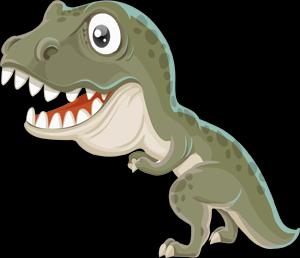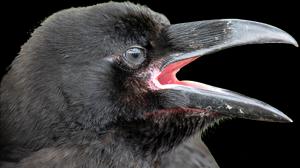| FOCUS | CREATION NEWS AND VIEWS |
Yet another function for (not) ‘junk’ dna
Scientists have been digging into how our body clocks (circadian rhythms) work. They found that there are lots of micro-RNA (miRNA) segments that regulate genes known to be involved. They identified over a 100 such miRNAs.
These are found in the non-protein-coding DNA. This is the 98% of our DNA that was labelled as ‘junk’ by scientists who had their thinking distorted by evolutionary notions. Indeed, evolution needs lots of non-functional (junk) DNA, otherwise the notion is in trouble. And it is in big trouble, because real science keeps finding more and more functions for the former junk.
One commentary on this research was titled, “Our body clock is largely kept working by ‘junk DNA’—Though to be honest, can we really call it ‘junk’ now?”
It is time the notion of ‘junk DNA’ was discarded, and along with it the unscientific notion that mutations and natural selection (evolution) explain the diversity of life on Earth.
- Zhou, L. et al., A genome-wide microRNA screen identifies the microRNA-183/96/182 cluster as a modulator of circadian rhythms, Proc. Nat. Acad. Sci. 118(1):e2020454118, Jan 2021.
- Micu, A., Our body clock is largely kept working by “junk DNA”, ZME; zmescience.com, 5 Jan 2021.
Noah’s ark didn’t need giant T. rex

Recent fossil discoveries carry an important message about Noah’s Ark. (Not surprisingly however, the researchers involved didn’t recognize/acknowledge it as such.)
The researchers found a toe claw from a baby tyrannosaur in Alberta, Canada. This prompted them to more closely analyze an already-known fossil jawbone from another baby tyrannosaur, found in Montana in 1983. With the aid of modern techniques, the researchers noticed key indications that both toe claw and jawbone are actually from the embryonic stage. I.e, these tiny tyrannosaurs died before they had hatched.
This shows us that, in the words of LiveScience, “the gigantic apex predator started out with a skull the size of a mouse.” And as one evolutionary biologist explained, various tyrannosaurs had extreme growth rates, “hatching out not much heavier than a house cat, and growing to the size of an elephant over 15 years or so.”
So, Noah’s job of accommodating ‘T. rex’ (and other dinos known for their huge size) on the Ark was a whole lot easier than some might imagine. The pairs God sent to him could have been at or shortly prior to adolescence. That would have meant they were much smaller than mature adults, but still able to fend for themselves by the end of the Flood year.
- Geggel, L., 1st of their kind baby tyrannosaur fossils unearthed; livescience.com, 16 Oct 2020.
‘Witness to evolution’ claim—a very fishy story

According to the BBC, the very rare asprete fish, Romanichthys valsanicola, is said to have survived unchanged for ‘65 million’ years. It is now found only in a fast-flowing section of Romania’s Valsan River. Construction of dams is blamed for asprete numbers dwindling perilously near extinction.
Recently, biologist Andrei Togor was ecstatic to discover 12 of the fish still living in the river. “Having an Asprete in front of our eyes was fantastic. It’s one of the biggest rewards a field biologist can get.” However, he urged: “It was here 65 million years ago. People cannot just destroy it in 50 years—it’s not right,” he says.
Fellow biologist Nicolae Craciun agreed. “The Asprete is a living fossil, they need to be protected with the utmost importance by scientists and conservationists,” he said. “They are witnesses of evolution.”
Really? Asprete fish are still asprete fish, even after all that supposed(!) time. This is stasis, the opposite of evolution (see creation.com/stasis). The evidence of ‘living fossils’ supports the Bible’s eyewitness account of creation. All creatures were created (only about 6,000 years ago, not millions) to reproduce “after their kind”. That is exactly what we, and the rest of creation, witnesses.
- McGrath, S., Back from the dead: Race to save Romania’s 65 million-year-old fish; bbc.com, 8 Nov 2020.
Dig those ‘stone age’ dog bones

An archaeological dig in Ljungaviken, Sölvesborg, Sweden has uncovered a ‘stone age’ human burial along with the country’s oldest buried dog. The ‘date’ given, 8,500 years, is clearly inflated somewhat, exceeding the history in the Bible. The grave contained other burial goods, and was located in the middle of a village containing 51 dwellings.
Carl Persson, project manager at Sweden’s Blekinge museum said these discoveries “make you feel even closer to the people who lived here … . A buried dog somehow shows how similar we are over the millennia when it comes to the [sic] feelings like grief and loss.”
The settlement was buried beneath layers of sediment, from when the area was flooded. That was likely toward the end of the post-Flood Ice Age, when the ice sheets melted, raising the ocean level. This submerged much land, including any settlements built there. Noah’s Flood provided the conditions for the Ice Age that quickly followed (creation.com/what-caused-ice-age).
This ancient dog is a descendant of an original wolf-like canine pair, which boarded the Ark, some 4,500 years ago (creation.com/dog-origins). Following Babel, Noah’s descendants migrated, populated the earth, and eventually reached Sweden. By this time some of those dog descendants had become domesticated, as demonstrated by the dog buried with his owner.
- Geggel, L. Stone Age dog may have been buried with its master; livescience.com, 29 Sep 2020.
- Ström, S. 8,400-year-old dog found in Sölvesborg; blekingemuseum.se/news/1211, 24 Sep 2020.
‘Sistine Chapel’ of rock art discovered in the Amazon


Tens of thousands of paintings have been discovered by a British-Colombian team of archaeologists, who call it ‘the Sistine Chapel of the ancients’. Drawn on cliff faces, which provide a smooth canvas and are sheltered from rain, they span 13 km (8 mi) in the Amazon rainforest, Columbia. The display contains animals, including ‘megafauna’ that went extinct at the end of the Ice Age. With secular assumptions of when this was, the team says the images are at least 12,000 years old.
Team member José Iriarte, Professor of Archaeology at Exeter University, said, “We started seeing animals that are now extinct … . The ice-age horse had a wild, heavy face. It’s so detailed, we can even see the horse hair. It’s fascinating.”
The range of images, drawn in reddish ochre, is staggering. There are people dancing, hand prints, geometric shapes, trees, plants, and a wide range of animals. These include giant sloths, horses, mastodons, fish, turtles, lizards, monkeys, and birds. There are also portrayals of wooden towers, probably used as platforms to draw the high-up paintings.
The artists are believed to have crossed from Siberia into North America before travelling down to the Amazon. This would have been during the biblical Ice Age. Lasting some 500–700 years, it was triggered by the volcanically-warmed waters of Noah’s Flood, some 4,500 years ago. Sea levels were much lower due to the water stored on land as ice. This exposed such routes for migrating people groups after Babel.
These breathtaking paintings clearly display the intelligence and artistry of Noah’s descendants. For biblical creationists there is particular fascination in any detailed record of extinct animals living alongside mankind. Other examples may come to light as more images are released from this treasure trove.
- Alberge, D., ‘Sistine Chapel of the ancients’ rock art discovered in remote Amazon forest; theguardian.com, 29 Nov 2020.
- Boucher, B., Archaeologists Just Discovered Tens of Thousands of Ultra-Realistic Ancient Rock Paintings in the Colombian Amazon; news.artnet.com, 30 Nov 2020.
New human organ discovered in the throat

Researchers at the Netherlands Cancer Institute accidentally discovered a previously unknown organ. While conducting scans of the human body they found the ‘tubarial salivary glands’. These are located at the top of the throat, behind the nose. This hard-to-reach area contains the pair of glands. Each is about 4 cm (1.5 in) long. They lubricate the throat, which helps swallowing.
This discovery has implications for radiotherapy in cancer treatment. Radiation damage to salivary glands can lead to “impaired food intake, digestion, speech problems and increased risk of caries [tooth decay] and oral infections.” Adverse effects in this area had not previously been taken into consideration. The discovery of these salivary glands “could help to explain and [in future] avoid radiation-induced side-effects.”
This discovery reminds us that scientists have much to learn about the human body. We are still discovering designed and purposeful organs, for which the Creator should receive due praise.
- Valstar, M.H. and 14 others, The tubarial salivary glands: A potential new organ at risk for radiotherapy, Radiotherapy and Oncology, 23 Sep 2020.
- Pappas, S., Scientists discover new organ in the in the throat; livescience.com, 20 Oct 2020.
New australopithecine skull illustrates lack of human resemblance
A BBC article reported on a robust australopithecine skull from the Drimolen site, South Africa, discovered in 2018. The skull (DNH 155), assigned to Australopithecus (Paranthropus) robustus by the research team of Martin et al., was found only metres away from where a Homo erectus child’s skull (DNH 134) was discovered in 2015. Both were ‘dated’ to allegedly about 2 million years ago.
Skulls from A. robustus are already known, so this find does not add anything remarkably new. However, looking at the skull of this specimen, as well as those of other australopithecines (e.g., A. africanus and A. afarensis), underlines the obvious fact that there was nothing human-like about them. Some may have been capable of walking upright in some manner, or adopting an upright posture, whether on the ground or in the trees. Nothing is extraordinary about this. It no more indicates they were on their way to becoming human than were some extinct tree-dwelling ‘bipedal’ apes found (as fossils) in Europe.
The australopithecines were an extinct group of diverse apish primates that were at home in the trees. Likely they represent only a few (perhaps just one) biblical kinds, and the diversity in form shows variation within the kind(s). ‘Fossil’ humans categorized as Homo erectus were likely early post-Babel humans. They made tools and may even have constructed watercraft and navigated seas during their migration to distant regions of the earth. Hence, they were very intelligent and fully human.

- Two-million-year-old skull of human ‘cousin’ unearthed; bbc.com/news, 10 Nov 2020.
- Martin, J. M. et al., Drimolen cranium DNH 155 documents microevolution in an early hominin species, Nature Ecology & Evolution, 9 Nov 2020.
Homo erectus inventor of sophisticated tool
A recent study reported on bone tools from Olduvai Gorge, Tanzania, which had been excavated some fifty years ago. The most notable tool found was a bone point with three curved barbs and a carved tip. It was made from part of an animal’s rib. The tool was dated to an alleged 800 ka (thousand years ago). According to Bruce Bower, the previous oldest barbed bone points were dated to around 90 ka, “and were assumed to reflect a toolmaking ingenuity exclusive to Homo sapiens.” The find implicated Homo erectus as the inventor— “because stone tools previously excavated in the same Olduvai Gorge sediment resemble those that have been found at other African sites with H. erectus fossils.” This find suggests the more we learn about humans categorized as Homo erectus, the more we will realize that they were intelligent humans. Homo erectus were most likely early post-Babel humans that had migrated away. Given the difficult conditions that may have confronted these people, one should not judge them by how their technology compared to ours. Rather, we should consider how we would have coped in a similar situation.

- Bower, B. Homo erectus, not humans, may have invented the barbed bone point; sciencenews.org, 22 Oct 2020.
- Pante, M. et al., Bone tools from Beds II–IV, Olduvai Gorge, Tanzania, and implications for the origins and evolution of bone technology, Journal of Human Evolution, 148, Nov 2020, 102885.
Smart young ravens amaze researchers
Chimpanzees’ prowess at performing tasks designed to measure their intelligence excites evolutionists. It is used to push the idea that chimps are our close evolutionary cousins.

Increasingly, however, research shows that parrots, crows, and other birds can surpass chimps in such intelligence tests. These findings consistently surprise the evolutionary fraternity. Birds aren’t anywhere near primates on the (supposed) ‘evolutionary tree’ and have much smaller brains. (See e.g., creation.com/pigeon-revision.)
In a recent study, researchers compared adult chimps and orangutans with young ravens; specifically 4, 8, 12, or 16 months of age. Even the 4-month-old ravens displayed intelligence rivalling that of the grown-up chimps and orangutans.
“We didn’t expect that they’d master these tasks so quickly,” said Simone Pika, cognitive scientist at Germany’s Osnabrück University. “Across a whole spectrum of cognitive skills, their intelligence is really quite amazing.”
But for all the intelligence on display from the test subjects, there is a chasm separating them from the humans doing the research. That in itself ought to point to the truth of the Bible’s creation account. In it we read that man was the only creature made in the image of God and appointed to rule over the beasts and birds. The scientific evidence for mankind’s superiority is surely overwhelming.
- Nuwer, R. and Hamilton, J., Young ravens rival adult chimps in a big test of general intelligence; scientificamerican.com, 10 Dec 2020.
Herod’s throne and courtyard where Salome danced identified
John the Baptist directly challenged Herod the Tetrarch’s immoral relationship with his niece—Herodias. She was originally married to his older half-brother, Herod Philip. For speaking out, John the Baptist was imprisoned in the fortress palace of Machaerus. This was situated on the eastern shore of the Dead Sea, in modern-day Jordan.

While John was in prison, Herod held a birthday banquet. During the party, his stepdaughter Salome performed a dance which pleased Herod. In response he vowed to give her whatever she asked of him. Prompted by her mother, Herodias, Salome asked for the head of John the Baptist. Herod granted the demand, straight away.
The events of Matthew 14:1–12 outlined above took place in the clifftop palace of Machaerus. Archaeologists have now identified, and partly restored, a semicircular niche in which they believe Herod’s throne was positioned. It sat at the end of a once magnificent, c. 650 sq. m. (7,000 sq. ft.) royal courtyard. This was the setting of the birthday banquet.
The Bible’s true and accurate history is constantly being brought to life and verified through such archaeological finds.
- Vörös, G., Reconstructing Herod’s throne at Machaerus, Biblical Archaeology Review 45(5):30–37, 2020.
- Bohstrom, P., King Herod’s throne room where ‘Salome danced’ found in Jordan; haaretz.com, 13 Dec 2020.
Another risk from long ages
Over recent decades, museums have been changing the way they care for their geological collections.
It was long thought that fossils, rocks, and minerals were too strong and durable to deteriorate. So they did not need special attention to stop this. However, Dr Caroline Buttler from the UK, in an old article that just came to our notice, indicated otherwise. She said that environmental factors can be “major threats” to such materials. For example, she mentioned temperature, humidity, light, and pollution. These can cause minerals and fossils to deteriorate much more rapidly than previously assumed.

She also outlined in detail a number of the mechanisms by which they decay. These even sometimes lead to their “complete destruction”. The article also gave ways to try to extend their life. She reported a growing interest in providing appropriate storage conditions, and specialist staff to care for them.
Interestingly, Dr Buttler commented on what caused this past careless attitude. “Perhaps” it was the thought that the rocks and fossils “had already survived millions of years”. That suggests long-age evolutionary beliefs fostered the idea that they would not need any particular attention.
- Buttler, C., Preserving geological museum collections, Deposits 16:4–6, 2008.


Readers’ comments
Comments are automatically closed 14 days after publication.